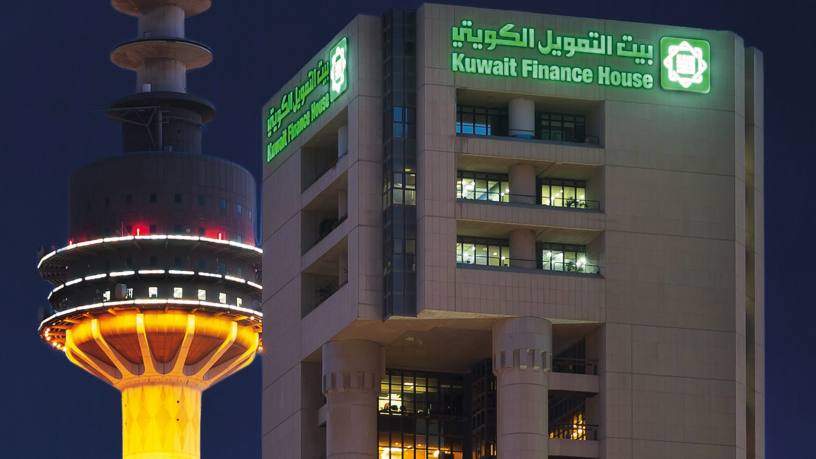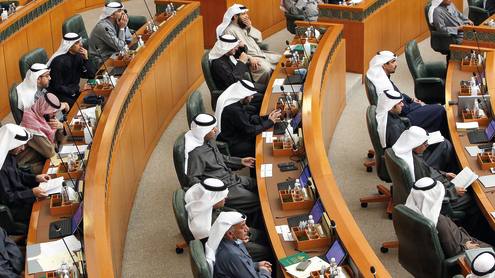After its most difficult year since the first Gulf war, Kuwait is back from the brink. The country’s vaccine rollout is underway, with around 5% of its four million strong population receiving at least one dose as of mid-March. Oil revenues, which account for 90% of government revenue, have ramped up since November, with prices recovering from historic lows to pre-pandemic levels by early February.
Kuwaiti banks can take comfort from such trends after one of their most challenging years. While the sharp contraction of the economy in 2020 has had an inevitable impact on profitability and asset quality, the country’s financial sector remains well capitalised and well provisioned.
“Despite the ramifications of the Covid-19 pandemic on local and international economic conditions, the overall conclusion is that the sector had successfully weathered the first year of the crisis,” the Central Bank of Kuwait (CBK) said in a February report.
Yet as the world enters the second year of the coronavirus crisis, Kuwaiti banks have little room for complacency; a fresh outbreak of cases in early 2021 has prompted new restrictions on face-to-face interactions, putting the recovery of the domestic economy — and particularly the country’s struggling small and medium-sized enterprise (SME) sector — in jeopardy.
“Our predictions for 2021/2022 rely on the recovery of the economy and sentiment of the market, which are of course associated with the status of Covid-19,” says Abdulwahab Al-Roshood, acting group chief executive of Kuwait Finance House (KFH), the country’s second largest lender by assets.
We expect GCC banks’ asset-quality indicators will continue to deteriorate and cost of risk to remain high
While actions taken by central banks across the Gulf region have cushioned the impact of the crisis on both consumers and lenders, the gradual reversal of such measures as economies return to normal will adversely impact asset quality.
“We expect [Gulf Co-operation Council (GCC)] banks’ asset-quality indicators will continue to deteriorate and cost of risk to remain high, as they start recognising the true impact of 2020 and forbearance measures are lifted in second-half 2021,” said Mohamed Damak, senior director and sector lead for financial institutions in the Middle East and Africa at S&P Global in a mid-March research note.
“Given continued low interest rates, banks’ profitability will remain low in 2021 and beyond, with some potentially showing losses in 2021,” he said.
Precautions and impact
The CBK was quick to act at the start of the pandemic in March 2020, cutting interest rates to an all-time low of 1.5%. Among the measures deployed by the bank were the reduction of minimum limits for lenders’ liquidity coverage ratios, net stable funding ratios and regulatory liquidity ratios, and a reduction in the capital adequacy rate to 10.5% from 13%.
In a bid to maintain lending, the CBK also increased loan-to-value ratios for land, real estate and construction purposes, and cut the risk weight for lending to SMEs, which make up around 90% of registered companies in the country.
For their part, Kuwaiti lenders in March announced a moratorium on loan payments running until the end of September 2020, a move which provided support for consumer spending.
“While retail customers were able to put aside money, we also saw them spend money that would have been used for travelling instead used for online purchases,” says Elham Mahfouz, chief executive of Commercial Bank of Kuwait.
Banks financials for 2020 paint a picture of a sector that is bruised, but unbowed. Profits reported by the sector dropped by 48.7% to Kd964m ($3.2bn) according to CBK data, thanks to a combination of low interest rates, rising bad debt and higher provisions.
Yet asset quality remains high by historic standards, with NPL coverage for the sector above 200% for the sixth consecutive year.
“Over the years, in view of prudent provisioning policies of the CBK, the banks have built adequate buffers which has helped [maintain stability] and kept the overall industry non-performing loan (NPL) levels in 2020 in the range of 1.5% to 2%,” George Richani, group CEO of Ahli Bank Kuwait (ABK), told The Banker. “We expect the NPL levels to remain at the same levels in 2021/2022.”
Other lenders remain cautious about the outlook, given the surge in cases since early 2021.
“As the pandemic is not yet over, and on the other side the vaccination is expected to take longer, we are of the opinion that it is not prudent to give a guidance on non-performing financings,” says Mr Al-Roshood.
The sector remains well capitalised, with an overall capital adequacy ratio of 19% at the end of 2020, up from 18.5% at end-2019, and well above CBK’s mandated minimum of 13% and the 10.5% minimum recommended under Basel III standards. Liquidity coverage, net stable funding and regulatory liquidity ratios all stood comfortably above the CBK’s mandated minimum levels for the year.
Credit growth
Greater flexibility on loan regulations, combined with the moratorium on loan payments introduced by banks, meant that credit growth continued in 2020 in spite of the pandemic. Net credit facilities grew by 4.2% to Kd51.8bn in 2020, according to CBK data — the slowest percentage rise since 2016 and just below the 6% compounded annual growth rate of the past 10 years.
The ongoing low interest rate climate is set to stimulate credit growth in 2021 and beyond.
“We expect credit growth of around 4–5% in 2021 as business credit growth is likely to benefit from a rebound in economic growth and increased government spending,” says Salah Y Al-Fulaij, Kuwait chief executive of the National Bank of Kuwait (NBK), the country’s largest lender.
“This will likely take place despite the expected weaker working capital financing in 2021, contrary to the trend that we increasingly witnessed over the past year due to the pandemic.”
Mr Richani expects credit growth of between 3–4% in the corporate sector and between 5–6% in the retail sector.
While an uptick in government project and infrastructure spending would provide a significant credit boost for lenders, such a prospect is complicated by potential liquidity shortages at the fiscal level. The government’s General Reserve Fund (GRF) stands nearly depleted after the collapse in oil revenues in 2020, with parliamentary obstruction preventing the government from borrowing from the markets.
Such concerns saw Fitch Ratings downgrade its outlook for Kuwait’s banks to negative in February, following a downgrade of Kuwait’s sovereign debt earlier that month.
Digital acceleration
Restrictions on physical interactions in the midst of the pandemic have inspired a global boom in the use of digital financial services, and Kuwait is no exception. Lenders have accelerated their digital transformation programmes in a bid to both cash in on the rising popularity of e-commerce services and to reduce costs and streamline operations as restrictions continue.
“We are working on minimising manual work to near zero and moving forward in our digital strategy to keep abreast of the latest developments in the banking industry,” says Mr Al-Roshood of KFH. “In addition, we are relying more on robotics in all our business operations.” KFH recorded more than 140 million digital transactions by its customers online or via mobile in 2020, he adds.
Lower earnings and credit demand put pressure on banks, driving them into solutions to foster efficiency and margins
CBK governor Mohammad Y Al-Hashel noted that the value and volume of payments via its Online Payment Gateway (OPG) had surged by 121% and 90%, respectively, compared with the previous year, with OPG payments now accounting for 20% of value and volume of payments.
“While the use of ATMs and point-of-sale machines have been greatly affected by lockdowns and stay-at-home orders, OPG has gained ground with the public increasingly switching to online shopping,” he says.
Mr Al-Fulaij of NBK said that the number of users of its mobile app increased by 38%, with the number of transactions made via NBK mobile banking rising by 51%. “Total online card payments rose by 94% and we saw a 200% increase in contactless payment transactions, compared to [2019],” he says.
Mr Richani of ABK noted that the bank had witnessed a year-on-year growth of more than 73% in online domestic transactions. “We saw an increase of over 30% in new mobile banking customers, a 35% increase in online transfers, 75% growth in online bill payments and over 800% growth in the ABK Pay service, which offers customers the ability to request payments through channels such as WhatsApp and SMS.”
Consolidation
Declines in profitability and asset quality brought on by the coronavirus crisis have fuelled speculation about further consolidation among banks across the GCC, with a flurry of deals announced across the region in the past five years.
While the first wave of mergers in the region had been spurred by shareholders’ desire to reorganise assets, a new wave is likely to be more opportunistic and spurred by economic rationale, according to S&P’s Mr Damak.
“The operating environment might push some banks to find a stronger shareholder or join forces with peers to enhance their resilience,” he said. “However, it would require more aggressive moves by management than seen previously.”
After years of discussions, January 2020 saw KFH shareholders give their approval for the acquisition of Bahrain’s Ahli United Bank (AUB), the first cross-border bank acquisition in the GCC for several years and a significant consolidation within Kuwait, with AUB’s local subsidiary one of the biggest contributors to its overall loan book.
Yet the deal has been pushed back given the impact of the coronavirus. The CBK advised KFH to conduct a reassessment of the acquisition once the impact of the pandemic has subsided. Mr Al-Hashel told The Banker in early March that it was too early to start the reassessment “as the pandemic continues unabated”.
KFH’s Mr Al-Roshood declined to comment on the future timing of the exercise, but noted that pressures on lenders may prompt further consolidation in the sector.
“Lower earnings and credit demand put pressure on banks, driving them into solutions to foster efficiency and margins, and to reduce the cost of providing liquidity to borrowers and improve the return on shareholders’ equity,” he says. “The consolidation in the banking sector will help to increase banks’ pricing power when competing for deposits. Also, it will help put an end to rising financing costs, as well as contribute to improving profitability in the long term.”
He noted, however, that consolidation was unlikely until the shape of Kuwait’s economic recovery becomes clearer.
While economic logic favours the creation of larger banks, the ownership structures of Kuwaiti lenders may make such tie-ups less likely.
“Consolidation among banks in general happens through cycles everywhere, including our region in the Middle East, and research suggests that usually scale matters and that the biggest three or four banks in most emerging markets have the highest average return on equity,” says Mr Richani of ABK.
“Although the same logic should apply in Kuwait, there are other issues that work against consolidation, such as the ownership structure of banks which makes joining forces among domestic players less appealing, especially when it comes to losing control among major shareholders.”
NBK’s Mr Al-Fulaij noted that its focus remains on organic growth, but that the bank remains “opportunistic in case a potential transaction emerges that can increase synergies and create value for our shareholders”.














